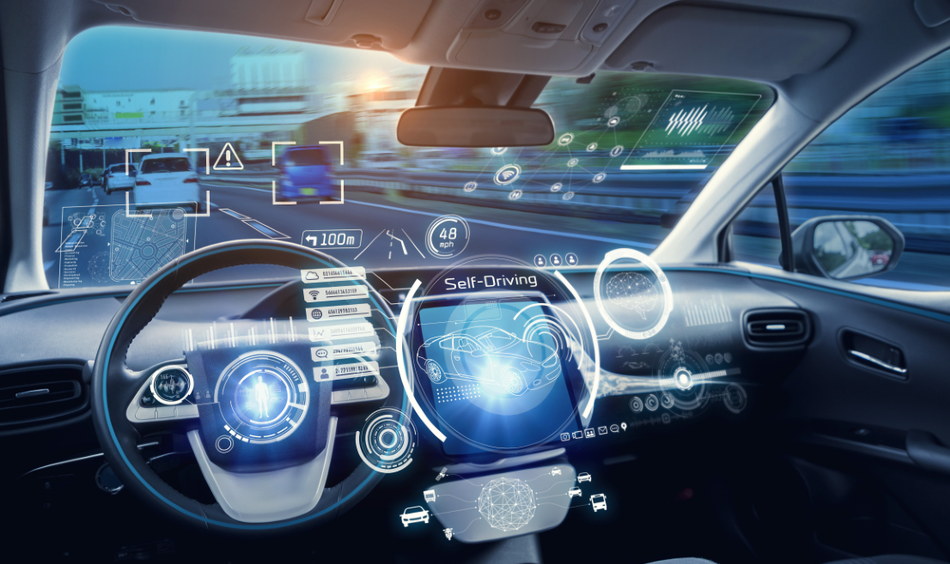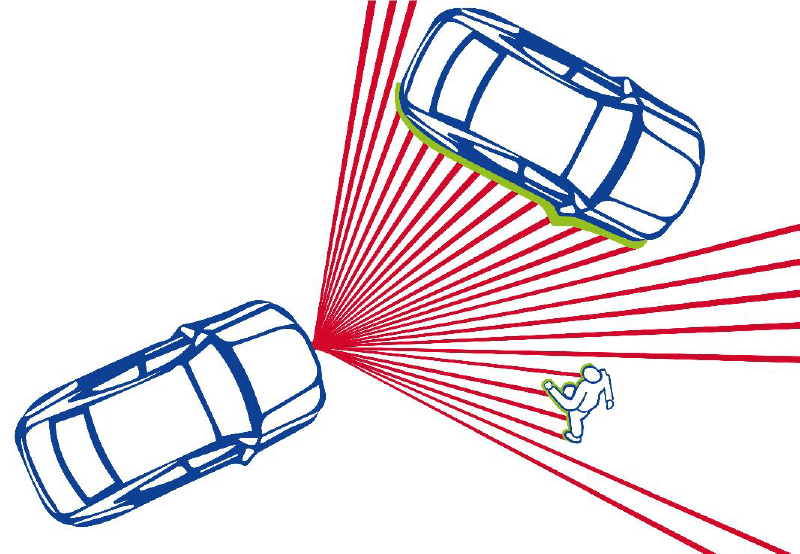Autonomous driving is slowly becoming a reality with research and industry showing gradual developments. Lidar systems are a fundamental part of a car that is becoming less dependent on active control that comes from the driver. Functions, like systems, are already occurring and sensors help to play a particular role.

Image Credit: Shutterstock/metamorworks
Lidar, also known as light detection and ranging, technology is based on successful driver assistance systems like adaptive cruise control, a collision warning system, lane change assistant and blind-spot alert. Although there is a relation between lidar and radar, lidar uses laser beams instead of radio waves for the measurement of speeds and distances.
Lidar systems have a tremendously high angle and distance resolution, and supersede conventional radar and camera systems. An extremely precise model of the area surrounding a vehicle can be created through the means of software. This not only detects road users, like other four-wheeled or two-wheeled vehicles and pedestrians, but it also offers information about road markings, signs and other traffic facilities like barriers or traffic lights.
Lidar Systems – Requirements to be Met
Lidar systems must meet automotive and mobility requirements, but there are some challenges regarding the sensors used that users need to overcome.
- Monitoring of the area surrounding the vehicle: Vehicles that are required to operate at high speeds especially need a very wide "visual field," an extremely effective predictive system and a very fast and reliable detection system.
- Resistance: The sensors that are used need to be able to tolerate a variety of environmental impacts and all-weather conditions as well as wind speeds.
- Compliance: The electronic system is required to naturally conform with the standard industry requirements, and the sensors are required to fit into the overall design of the sensor system used.
- Cost-effectiveness: Although a lot is possible, not everything can be done within a financially sustainable framework. Developers of lidar systems must monitor the costs and search for a solution that is 100% reliable while also being cost-effective.
A long-range lidar system meets the requirements of maximum safety and resilience and it identifies objects at distances of up to 300 meters. It is the optimal laser to select for vehicles that operate at high speeds. A variety of sensor solutions are available for use in the automotive sector.

LIDAR-scanner in action. Image Credit: First Sensor AG
Reliable Sensors are Essential
At the heart of any lidar system are its sensors. Each sensor technology has its own benefits and drawbacks as seen below:
Silicon PIN photodiodes
The detectors are silicon-based and consist of three eponymous semiconductor types: P-type, Intrinsic, N-type.
+ Dynamic scope is very wide, relatively cheap
- Delayed compared to the good signal-noise performance that modern lidar systems need; not overly fast
Silicon photomultipliers (SiPM) and single-photon avalanche diodes (SPAD)
Initially developed for small-scale applications within a scientific and medical setting, these detectors are gradually making their way into lidar.
+ Amplifier characteristics are good; very fast; chip-compatible with CMOS
- Oversteering danger; signal-to-noise ratio is unfavorable; extremely temperature-sensitive
Indium gallium arsenide photodiodes (InGaAs)
A technology that is able to operate without the normal silicon. InGaAs are still fairly novel in the world of lidar; they are often utilized in the telecommunications industry for small fiber-optic networks.
+ Ability to measure long distances; wide spectral range
- Temperature-sensitive; complex and costly to produce
Avalanche photodiodes (APD)
APDs were brought to maturity using industrial and military technology, and are now a basic feature of the majority of vehicles used for autonomous driving.
+ High sensitivity; optimal signal-to-noise ratio; fast; cheap
- Not compatible with CMOS technology
Choosing the Best Sensor
As a driver assistance system, it is impossible to survive without lidar. Sensors provide the hidden key aspects of this technology, and autonomous driving would be impossible without them. It would be impossible to safely measure distances and speeds of objects without using laser beams.
To find out how users can discover the optimal sensor system for a particular field of application for lidar and to find out about a manufacturer's experience and qualifications in the automotive sector, the important criteria from First Sensor can be viewed. It can help in deciding which support services can be built on and explains how detectors can be tailored to meet the needs and requirements of the industry.
Download the white paper here.
This information has been sourced, reviewed and adapted from materials provided by First Sensor AG.
For more information on this source, please visit First Sensor AG.